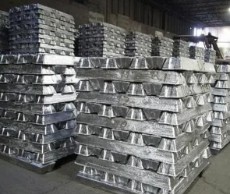Artificial intelligence will increase copper consumption by one million tons by 2030
The largest producers and suppliers of non-ferrous metals; Copper and aluminum
Types of services and work areas
1selling all kinds of copper with different qualities
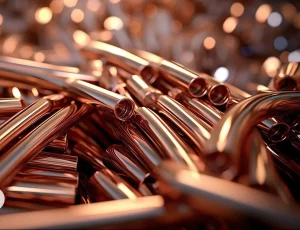
Copper alloys are divided into 3 categories, the distinguishing feature of which is the composition of the desired alloy. In general, the types of copper alloy are brass metal, high purity copper tribate and bronze.
Types of copper and its alloys:
1-Pure copper: which contains 99.3% or more copper.
2-High percentage alloys: they have copper percentage between 96% and 99.3% and silver may be added to achieve special properties.
3- Rices: they have zinc as the main alloy element, and other elements such as iron, aluminum, nickel and silicon are added to improve the properties of the alloy. Brass has high corrosion resistance and tensile strength.
applications:
It is a flexible and malleable metal that has many uses in the following cases:
Copper wires
Copper pipes
Door handles and other household items
Sculpture, for example, the Statue of Liberty, contains 179,000 pounds of copper.
Electromagnets
Motors, especially electromagnetic motors
Watt steam engine
Electric switches and amplifiers
Vacuum lamps, cathode ray lamps and microwave oven magnetrons
Waveguide for microwave radiation
Due to its better conductivity than aluminum, its use in ICs instead of aluminum is increasing.
As part of coins
In cooking utensils, including pans
Most flatware, spoons, forks and knives have some amount of this metal (nickel silver).
If sterling silver is used in dinnerware, it must have a small percentage of this product.
As a part of ceramic glaze and in glass painting
Musical instruments, especially wind instruments
As a biostatic in hospitals and covering different parts of the ship for protection against barnacles and mussels
Copper metal is one of the oldest elements known to mankind and dates back to about 10,000 years ago. In ancient Egypt, copper was known as the metal of pharaohs and other rulers. They believed that the use of copper would make kings immortal.
Also, the ancient Romans first extracted copper metal from its mines and reservoirs in Cyprus and used it. Iranians have been using copper and its alloys for making various utensils, tools and decorative products since thousands of years ago. Examples of these products have been discovered in areas such as Shahr Sokhte, Silk, etc. Most of these utensils and tools have been found intact due to the life of copper under the soil.
Due to the positive characteristics of this metal and its alloys such as bronze and brass, its use continued in the Middle Ages and beyond. As far as the industrial revolution, copper played an effective role in the progress of various industrie

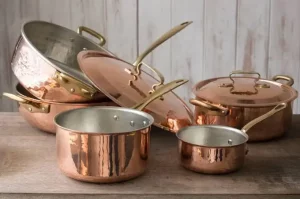

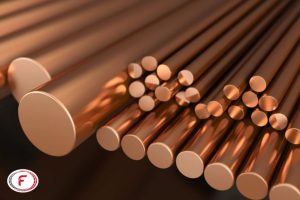
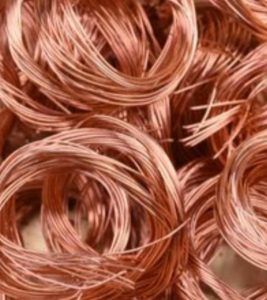
Some of the most important features of copper are:
High electrical and thermal conductivity: After silver, copper is the second high electrical and thermal conductor among pure metals. This property makes copper ideal for use in electrical wires, cables, hot water pipes and other applications that require efficient transfer of electricity or heat.
High malleability and malleability: Copper is easily bent and shaped into different shapes. This property makes copper suitable for use in the production of pipes, sheets, foils and other metal products.
Corrosion resistance: Copper is resistant to corrosion by air and water. This property makes copper ideal for use in water pipes, roofing and other applications that are exposed to the elements.
Beautiful Appearance: Copper has a beautiful red-orange color that turns green or blue over time as it oxidizes. This property makes copper attractive for use in jewelry, utensils, and other decorative objects.
Recyclability: Copper is completely recyclable. This property makes copper a sustainable and environmentally friendly material
Pure copper has a red-orange color. This color is due to the atomic structure of copper and the way it absorbs and reflects light. Normally, pure copper has a smooth and shiny surface that reflects light evenly. Shorter wavelengths of light, such as blue and green light, are absorbed by the copper atoms, while longer wavelengths, such as red and orange light, are reflected. This causes pure copper to appear red-orange.
When copper is heated, its electrons jump to higher energy levels. When these electrons fall back to lower energy levels, energy is released as light. The wavelength of the light that is released depends on the temperature of the copper. At low temperatures, copper emits light with a longer wavelength (red color). But as the temperature increases, copper emits light with a shorter wavelength (green and then blue).
The interesting thing is that the color of copper can be slightly different according to the impurities in it. For example, copper with gold impurities appears yellow-gold.
More introduction
Copper wire, copper cathode, other metals, aluminum ingot
Communication for supply and sales. Granting representation in countries that do not have representation
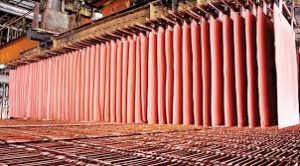
Copper cathode
Copper cathode is a product that is produced from copper and has a higher degree of purity and will have a higher electrical conductivity. Copper is the third most used metal in the world.
What is a copper cathode?
Copper is the third most used metal in the world after iron and aluminum. Copper is resistant to corrosion and has high thermal and electrical conductivity. Copper is soft and flexible and has a very high electrical conductivity. Pure copper does not exist on Earth, and what is present is a mixture of copper, iron, copper and sulfur ore called chocopyrate. After extracting copper ore from the mine, it is placed in a furnace up to a temperature of 1100 degrees Celsius. In this case, oxygen reacts with the iron in the copper ore and three substances, iron oxide, sulfur dioxide and copper sulphite are obtained. In the continuation of the heating process, copper sulphite, which is impure copper, is exposed to oxygen and connects with the remaining sulfur, and sulfur dioxide and 99% pure copper are created.
The copper obtained in this way is used in products that do not require a high degree of electrical conductivity. Electrofining process is needed to make copper cathode. During the electrofining process, impurities in copper such as nickel, gold and silver are separated from it. Cathode is used in chemistry as negative electrode in electrolyte process. The process of electrolyzing copper takes place due to its further purification. In this process, a cathode or negative electrode or pure copper and an anode or positive electrode or impure copper are placed with a potential difference of 0.2 to 0.4 volts in an acidic solution of sulfuric acid and copper sulfate. After 7 to 14 days, copper ions sit on the cathode through the electrolyte, and impurities settle in the form of sludge at the bottom of the container, and finally a copper cathode with a purity of 99.99% is obtained.
What is the use of copper cathode
Copper cathode is used as a raw material to produce high purity copper products and copper alloys. Due to its higher electrical conductivity than aluminum, copper cathode is used instead of aluminum in the production of ICs. Copper cathode is used to produce copper rod and copper wire for wire and cable industry. Copper wire is a type of wire produced from copper cathode.
Copper cathode is used in the production of copper molds. Copper cathode is used to make alloys such as brass, bronze, and alloy steel, which are used in transportation, electrical appliances, and machinery. Combining copper with other metals and creating copper alloys will improve properties such as hardness, greater expansion capability, and higher corrosion resistance. Copper cathode is used in transportation, electrical appliances and defense equipment. In the construction industry, copper cathode is used to produce products such as pipes, siphons and valves, fittings and valves, thin casting plates for doors and windows, heating systems, and fire extinguishers.
What are the technical specifications of copper cathode?
Copper cathodes are copper cathode sheets with dimensions of 0.5 to 1 square meter and thickness of 0.3 to 8 mm. Bundles of copper cathode sheets are 1 to 4 tons and are held together using straps. Copper cathode is the main product of copper production. The square copper cathode is 50 to 80 kg.
Types of copper cathode
According to the GOST 859 standard, there are different types of copper cathodes, each of which has a different impurity level:
• M00K: In the manufacture of M00K copper cathode, the total gross mass should not exceed 0.0165%.
• M0K: Copper purity is above 97.99%.
• M1K: Copper purity is 95.99%.
• M2K: Copper purity is 99.9%.
Copper cathode and its types
The impurities in the copper cathode are different and each of them will have a negative effect on the properties of the copper cutter.
For example, impurities such as aluminum, nickel, iron, zinc, and silver reduce the thermal and electrical conductivity of the copper cathode, and impurities such as bismuth, lead, and antimony reduce the mechanical properties and processability of the copper cathode. Oxygen, arsenic, sulfur, phosphorus and selenium will reduce the elasticity and corrosion resistance of the copper cathode.
Copper cathode available in the market are
• Leaching copper cathode, the most important consumers of which are wire and cable manufacturers.
• Copper cathode from mineral sources
• Copper cathode from secondary or recycled sources
In terms of quality, copper cathodes from natural sources will be placed first, leaching copper cathodes will be placed next, and recycled copper cathodes will be placed last, although the quality of recycled copper cathodes will depend on the type of scrap raw material. Copper cathodes are also used to produce copper ingots, these ingots are flat and conical or cylindrical.
Processing Media Group – Experts say that demand in the field of artificial intelligence can increase copper consumption by one million tons by 2030. The increased use of electric vehicles and technologies focused on renewable energy have made copper a very important and expensive element these days.
According to experts, if you look at the business demands of data centers and artificial intelligence these days, you will see that the demand for copper has suddenly increased. The demand for an additional million tons of copper is in addition to the four to five million tons deficit that exists until 2030, which is another problem in itself.
The global demand for copper this year is expected to be around 26 million tons. “Reuters” news agency conducted a survey in January which showed that the copper market shortage, which is estimated at 35 thousand tons this year, will reach over 100 thousand tons in 2025.
China is the largest producer and consumer of copper in the world. The country is also one of the world’s largest holders of many other industrial metals that are important for energy transmission. This fact has caused serious concerns for Western countries, lest they fall behind their competitors.
Ata Yavorcik, the chief economist of the European Bank for Reconstruction and Development, told Reuters that he believes that the increase in geopolitical tensions will slow down the acceleration of the “green transition”, meaning the abandonment of fossil fuels and the use of renewable energy sources.
According to this expert, China has many of the rare earths and graphite required for electric vehicle batteries. Thus, while Beijing has great control over the production of critical raw materials, the West and its allies have a relatively small share in the production of such critical materials for the green energy transition.
ALuminum is a chemical element with atomic number 13 and chemical symbol Al. This element is the most abundant metal in the earth’s crust and is placed after oxygen and silicon. Pure aluminum is a soft, silver-colored, non-magnetic metal. This metal has a low density (about one third of the density of steel) and good corrosion resistance.
Aluminum is not found in pure form in nature and exists in impure form in various minerals such as bauxite, chromite, garnet and mica. Most of the aluminum in the world is produced from bauxite.
. Application of aluminum in various industries
Updated on Sunday June 2, 2024 2
Application of aluminum
What is aluminum? Know the 7 uses of aluminum in different industries
What is aluminum? Know the 7 uses of aluminum in different industries!
Study time: 6 minutes
Aluminum is a chemical element with atomic number 13 and chemical symbol Al. This element is the most abundant metal in the earth’s crust and is placed after oxygen and silicon. Pure aluminum is a soft, silver-colored, non-magnetic metal. This metal has a low density (about one third of the density of steel) and good corrosion resistance.
Aluminum is not found in pure form in nature and exists in impure form in various minerals such as bauxite, chromite, garnet and mica. Most of the aluminum in the world is produced from bauxite.
Aluminum sheet is used in industries due to its useful properties, such as lightness, corrosion resistance, hammerability, and recyclability. We examine the use of aluminum in important industries.
What is aluminum
Aluminum as a widely used metal has different grades. Each grade of aluminum is usually used in certain cases. In general, it can be said that aluminum is a very popular metal and has the following characteristics:
light weight
strong
Resistant to metal corrosion
durable
hammer head
conductive
odorless
100% recyclable
It is interesting to note that the welding process for aluminum is different compared to steel. In general, aluminum welding requires different techniques, different welding shielding gases, and different pre- and post-welding processes. Aluminum can be welded with relative ease. But first of all, the most important thing is to choose the right welding process.
Aluminum welding is a complex process that requires a lot of skill and experience. In fact, aluminum is an active metal and easily reacts with oxygen. This reaction leads to the formation of an oxide layer on the aluminum surface, which prevents the metal from melting. For aluminum welding, this oxide layer must be removed and shielding gas must be used to prevent its re-formation.
Know the 7 uses of aluminum in different industries
Aluminum is a metal with unique properties that make it a popular material for various applications. Some of the most important uses of aluminum are:
Transportation
Construction
Power lines
Consumer goods
aerospace
Household appliances
Food packaging
In addition to these uses, aluminum is also used in other industries. For example, aluminum is used in the manufacture of household appliances, food industry, military industry and other industries.
Transportation industry-1
Aluminum is used in the transportation industry to make airplanes, ships, cars, bicycles, and other vehicles. The light weight of aluminum reduces fuel consumption and improves vehicle performance. Light weight means that we need less power to move the car and it helps in better fuel consumption. Although aluminum is not known as a strong metal, its alloy with other metals helps a lot in increasing the strength of cars.
While the automotive industry still relies heavily on steel, efforts to increase fuel efficiency and reduce CO2 emissions have led to increased use of aluminum. Experts predict that the average aluminum content in the automotive industry will increase by about 60% by 2025. 50 to 90% of aluminum alloys are found in aircraft bodies and even space shuttles.
2-Construction industry
Buildings made of aluminum do not need to be repaired due to their resistance to corrosion. Aluminum is a very useful metal in terms of heat. Because it keeps the house warm
3) Power lines
The low density in aluminum makes it the best choice for use in power lines over long distances. If copper metal is used, the supporting structures become heavier, more numerous and even more expensive. Aluminum is more malleable than copper, which makes it very easy to turn into wire.
In addition to power lines and cables, aluminum is used in engines, home appliances, and electrical systems. Also, TV antennas and satellite dishes, even some LED lamps are made of aluminum.
It is expected that the use of aluminum in power lines will increase in the future. This prediction is due to the advantages of aluminum over other materials such as copper. Because aluminum is lighter, cheaper and more resistant. Also, aluminum is a recyclable metal that is not harmful to the environment.
4) consumer goods
Due to its appearance, aluminum is widely used in the manufacture of consumer goods. Smartphones, tablets, laptops and flat screen TVs are made of aluminum. The appearance of this metal makes consumer goods look light, durable and beautiful.
Aluminum is used in most cases instead of plastic and steel parts because it is stronger and harder than plastic and lighter than steel. It also makes the heat dissipate quickly and the electronic devices do not overheat. Some other items made of aluminum include tables, chairs, lamps, picture frames and decorative panels.
5) Aerospace industry
Due to its light weight and high strength, aluminum is widely used in the construction of the body, wings and engine of airplanes and spacecraft. Airbus A380, Boeing 787, Falcon 9 space rocket are examples of the use of aluminum in the aerospace industry.
6) Packaging industry
Aluminum foil is used for food and medicine packaging due to its anti-permeability properties and keeping the material fresh. Also, aluminum cans can be used to pack drinks and some foods. Anti-permeability, preservation of material freshness and recyclability are among the advantages of this product in packaging materials such as chips, canned fish, carbonated drinks, etc.
7) Household appliance industry
Aluminum is used in the manufacture of household appliances such as refrigerators, freezers, washing machines, dishwashers and gas stoves due to its light weight, malleability and appearance. Light weight (easy portability), high strength, beautiful appearance, recycling are the advantages that make manufacturers use aluminum in making household appliances.
In this article, we talked about the uses of aluminum. The pots and pans you use most often are made of aluminum. These aluminum products conduct heat well, are non-toxic, rust-resistant and easy to clean.
Aluminum cans are also used for food and beverage packaging. Coca-Cola and Pepsi brands have been using aluminum cans since 1967.
in IRAN
With 37 billion tons of proven mineral reserves, Iran is one of the richest mineral countries in the world, so the presence of minerals such as Sarcheshme copper and Chadormello iron ore has made Iran register two valuable and unique mines in the world.
According to Akhtaznews, Iran has become known as the mineral paradise of the world with its rich mineral reserves and has been able to attract the attention of many investors in this field during the past decades. In this report, we introduce 11 important and large mines of Iran in order to know the real position of the country in this field in the world.
Sarcheshme copper mine
Sarcheshme copper mine is located 160 km southwest of Kerman and is the largest copper producer in Iran. This mine is considered one of the largest open pit copper mines in the world and the largest open pit mine in the Middle East.
Songun copper mine
Songun Varzeghan copper mine is one of the largest copper mines in Iran, which has more than one billion tons of copper ore reserves. The accompanying elements of this mine are molybdenum, gold, silver, rhenium, etc., and the history of mining in Songun dates back to two centuries ago (Qajar period).
Midok copper mine in Kerman
Midok copper mine in Kerman is one of the largest copper mines in Iran, which is located 132 km northwest of Sarchesheme copper mine. The old name of this copper mine was Lachah, which was changed to this name due to its proximity to Midok village.
Pabdana coal mine
Pabadana coal mine with a depth of about 600 meters is the deepest underground coal mine in Iran, located in Kohbanan city and 170 km from the center of Kerman province. The product of this mine is coking coal, which is sent to Zarand coal washery after extraction.
Chagarat iron ore mine
The first iron ore mine in Iran is Chagharat Bafaq iron ore mine in Yazd, which was the feed mine of Zob Ahan Company of Isfahan at the time of its establishment. Bafaq mining block is known as the most important iron ore region of Iran with more than a third of the country’s iron ore reserves.
Chadormello iron ore mine
Chadormello iron ore mine, which is currently the largest producer of iron ore concentrate in the country, with an extractable reserve of 320 million tons, is located in the heart of the central desert of Iran and 180 km northeast of Yazd city. Iron ore reserves of Chadormello mine will end in 10 years.
Gol Gohar iron ore mine
Gol Gohar iron ore mine in Sirjan city is known as the largest known iron ore mine in the Middle East with a possible reserve of one billion tons and a definite reserve of 219 million tons, and currently the products extracted from this mine are iron ore pellets, iron ore concentrate and aggregate
It is the responsibility of every Iranian to introduce the handmade carpet of authentic Iranian art to the world
